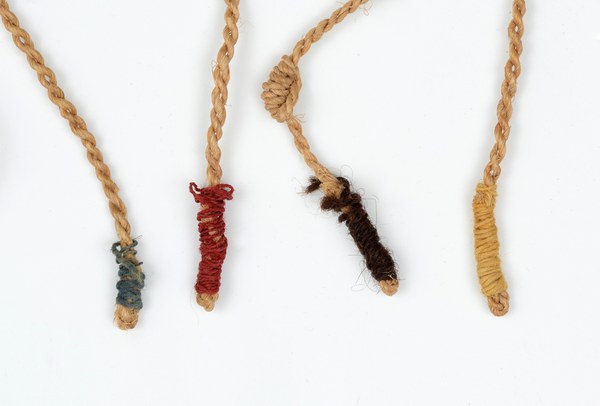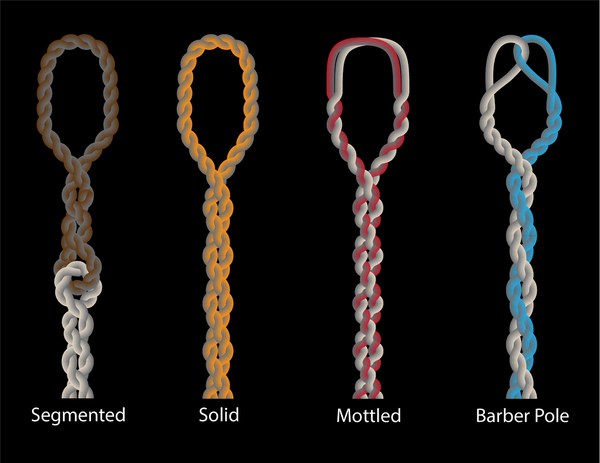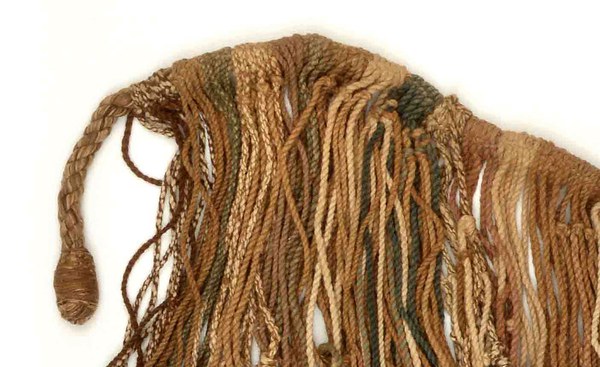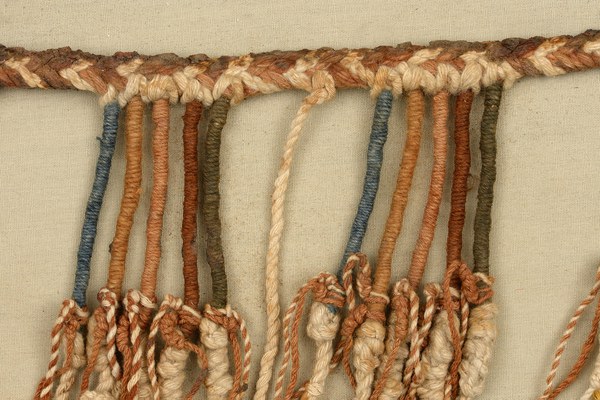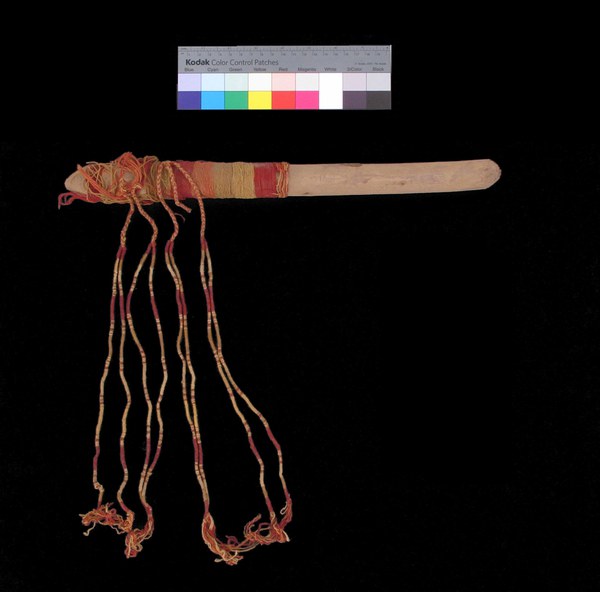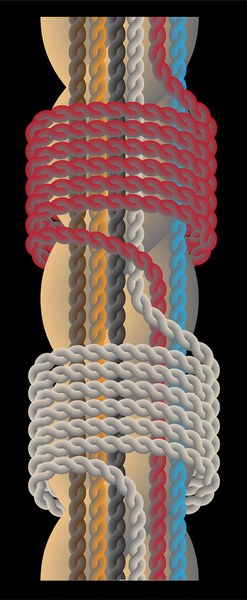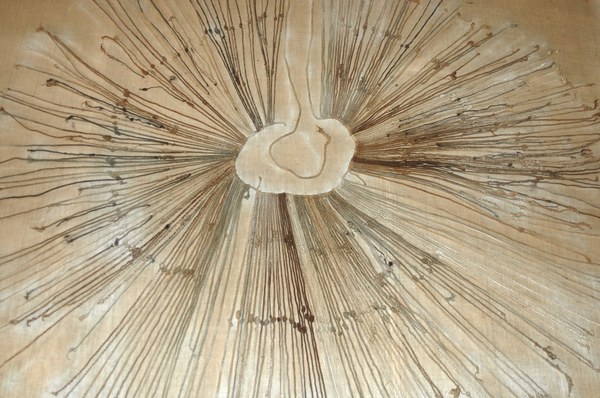“Por los colores sacaban lo que se contenía en aquel tal hilo, como el oro por el amarillo, y la plata por el blanco, y por el olorado la gente de guerra.” (Garcilazo de la Vega 1991 [1609–1617]: 344)
“The colors showed what subject the thread was about, such as yellow for gold, white for silver, and red for warriors.” (Garcilazo de la Vega 1966 [1609–1617]: 330)
Khipus employ a dual system of color and knots in which color represents categories of information, from the identity of individuals, communities, and livestock to labor and its products. Color was built into the structure of khipus beginning with cords, which can be monochrome, barber-pole, mottled (two or more colors), or segmented, where the color of the cord changes. Groups of pendant cords also have patterns. Banded khipus—where all pendants of a group (band) have the same color, but adjacent groups have different colors—are associated with individual, local-level accounting. Seriated khipus, which have pendants with repeating sequences of colored cords separated with gaps, represent aggregated, group-level information.
Color and Code
“. . . y sintiéndose morir [el Inca Huayna Cápac] hizo su testamento, según las construmbre de los Ingas, que consistía en tomar un bastón largo o especie de cayado y dibujar en él rayas de diversos colores, por las que se tenia conocimiento de sus últimas disposiciones; se le confió enseguida al Quipocamayoc o notario.” (Cabello de Balboa 1920 [1586]: 113–114)
“. . . feeling close to death [the Inka Huayna Capac] made his will in accordance with Inka customs, and on a long stick (like a staff) were put stripes with different colors that they knew and understood and constituted his last will, which was given in which was recorded by the Quipocamayoc.” (Cabello de Balboa 1951 [1586]: 113–114)
The symbolic use of color appeared as early as Late Paracas times, ca. 200 BCE, when people living on the south coast of modern day Peru made colorfully wrapped staffs and depicted them in their art. Staff wrapping incorporated principles of symmetry and binary opposition, such as Z and S twist, single and two ply, dyed and natural color, and vegetal and animal fiber. These objects likely represent a node in the development of khipus, as wrapping in Wari and some Colonial khipus employs similar conventions, and chroniclers describe the close relationship between wrapped staffs and Inka khipus. Wrapped sticks are used by some indigenous weavers today to model and remember stripe patterns, which often emblematically represent communities.
Khipu Decipherment to Date
Researchers Gary Urton and Manuel Medrano studied six khipus from San Pedro de Corongo in Peru's Santa Valley. Incredibly, Urton discovered a matching Spanish document from 1670, making them the only extant khipus whose contents are also in recorded alphabetic text. Urton discovered that the khipus’ colored bands indicate individuals, while Medrano found that cord attachments signify their moiety affiliation.
Separately, colonial khipu expert Hyland discovered notes from archaeologist Julio C. Tello’s 1935 interview with a khipukamayuq from Anchucaya, Peru, which revealed that the colored cords in seriated khipus represent the obligations of different social units placed in a memorized sequence of color-coded tasks. She also identified two eighteen century khipus whose makers’ ayllus’ names are pronounced using the sounds of the first syllables of each color of the final cords.

